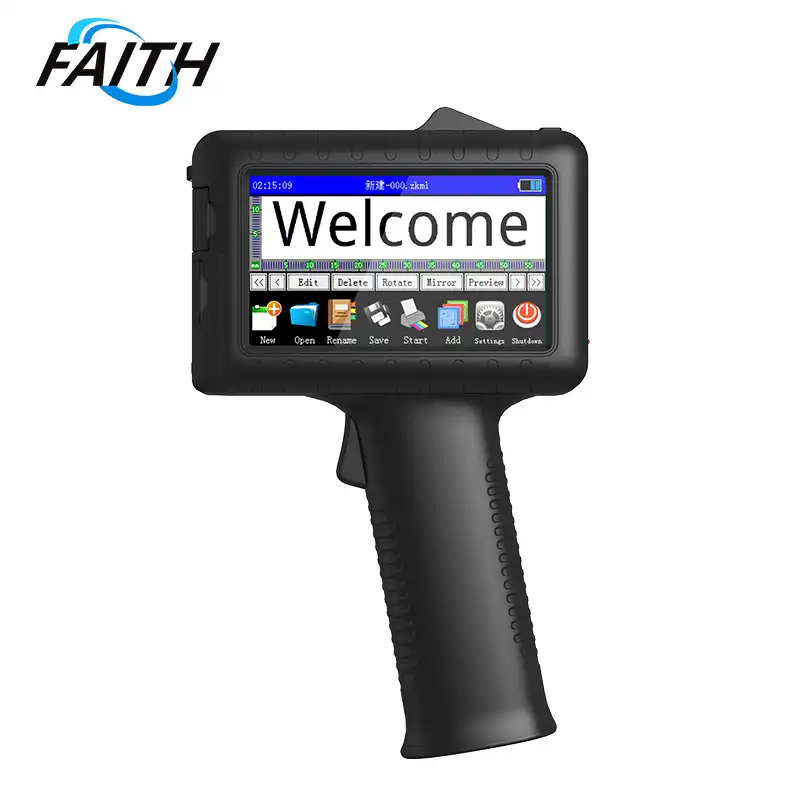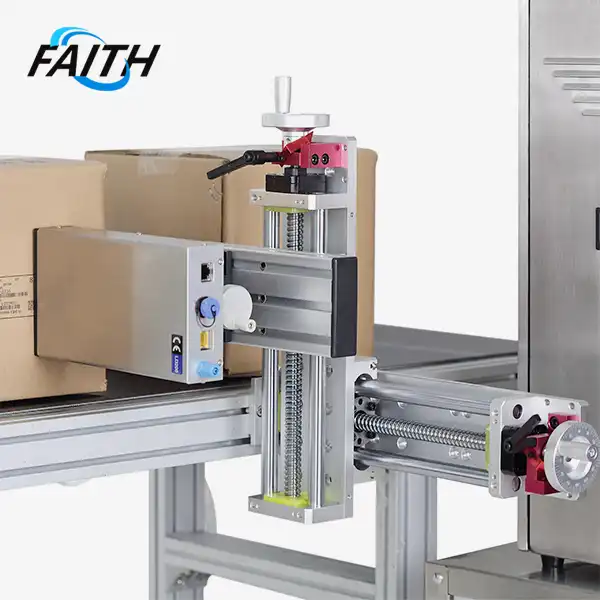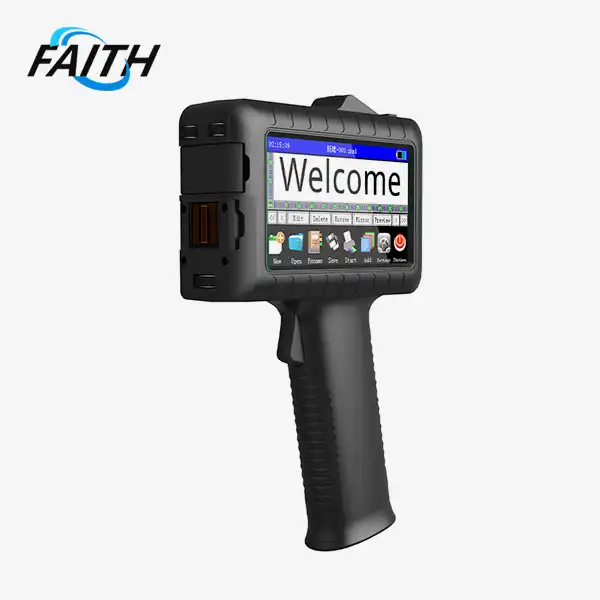The Ultimate Guide to Choosing a High Quality CIJ Printer for Your Operations
In today's fast-paced manufacturing environment, selecting the right Continuous Inkjet (CIJ) printer can make a significant difference in your operational efficiency and product quality. This comprehensive guide will help you navigate the complexities of choosing a high quality CIJ printer that meets your specific needs and enhances your production capabilities.
Comprehending the Importance of CIJ Technology in Modern Manufacturing
Continuous Inkjet (CIJ) technology has transformed product coding and marking across industries. Known for its speed, reliability, and versatility, CIJ is essential in sectors like food and beverage, pharmaceuticals, and automotive manufacturing. Its ability to produce high-quality, durable markings quickly makes it a valuable tool for enhancing production efficiency and meeting regulatory requirements in diverse industries.
A high quality CIJ printer offers unparalleled advantages in terms of production line integration and code durability. These printers excel at creating clear, lasting marks on a wide range of substrates, including plastic, glass, metal, and even challenging curved surfaces. The ability to print at high speeds without compromising quality is what sets CIJ technology apart in today's demanding production environments.
The core principle behind CIJ printing is fascinating. It involves the precise control of charged ink droplets in an electric field. A built-in pump creates a steady stream of ink, which then passes through a crystal oscillator. This oscillator vibrates at an astonishing rate - up to 70,000 times per second - breaking the ink stream into individual droplets. This high-frequency operation allows for rapid, accurate printing even on fast-moving production lines.
Key Features to Look for in a High Quality CIJ Printer
When evaluating high quality CIJ printers for your operations, several crucial factors should guide your decision-making process:
- Print Quality and Resolution: A superior CIJ printer should offer exceptional print clarity and consistency. Look for systems that provide high-resolution output, ensuring that even small text and complex codes remain legible.
- Ink Versatility: The ability to work with a variety of inks is paramount. Your chosen printer should accommodate different ink types suitable for various substrates and environmental conditions. This versatility ensures that your codes remain durable and readable, whether exposed to high temperatures, moisture, or other challenging factors.
- Production Line Speed Compatibility: In high-speed manufacturing environments, your CIJ printer must keep pace with the production line. Seek out printers that offer rapid printing speeds without sacrificing quality, ensuring seamless integration with your existing processes.
- User-Friendly Interface: Operational efficiency hinges on ease of use. A high quality CIJ printer should feature an intuitive interface that simplifies setup, operation, and maintenance tasks. This reduces training time and minimizes the risk of operator errors.
- Reliability and Uptime: Downtime can be costly in any production environment. Choose a CIJ printer known for its reliability and minimal maintenance requirements. Features like self-cleaning nozzles and robust build quality contribute to increased uptime and reduced maintenance costs.
- Environmental Considerations: Modern manufacturing demands eco-friendly solutions. Look for CIJ printers that use environmentally responsible inks and offer energy-efficient operation. Some advanced models even incorporate ink recycling systems, reducing waste and operational costs.
Tailoring Your CIJ Printer Selection to Industry-Specific Needs
Different industries have unique requirements when it comes to product coding and marking. Here's how to align your CIJ printer choice with specific sector needs:
- Food and Beverage Industry: In this sector, high-speed production lines and diverse packaging materials are the norms. Your CIJ printer should offer quick-drying, food-grade inks and the ability to print clearly on various surfaces, from plastic bottles to metal cans. Look for printers that can easily switch between different product types and sizes, minimizing downtime during changeovers.
- Pharmaceutical Industry: Precision and compliance are paramount in pharmaceutical coding. Choose a high quality CIJ printer that delivers high-resolution prints for small text and complex codes. The printer should also offer features that ensure code accuracy and traceability, such as automatic date and batch number updates. Importantly, the inks used must comply with industry regulations and be suitable for sterilization processes.
- Automotive and Aviation Parts Manufacturing: In these industries, code durability is crucial. Your CIJ printer should use inks that withstand extreme temperatures, chemicals, and abrasion. Look for printers that offer specialized inks for metal and plastic components, ensuring long-lasting identification marks that survive harsh operating conditions.
- Electronics Industry: For electronic component marking, precision is key. Select a CIJ printer capable of producing fine, high-resolution codes on small surfaces. The printer should also offer anti-static features to protect sensitive components during the marking process.
- Building Materials Sector: CIJ printers in this industry need to handle a wide range of materials, from glass to ceramics. Choose a printer with a robust design that can withstand dusty environments and offer inks suitable for porous and non-porous surfaces alike.
By carefully considering these industry-specific factors, you can select a high quality CIJ printer that not only meets your current needs but also adapts to future requirements. Remember, the right CIJ printer is an investment in your production efficiency, product quality, and regulatory compliance.
Conclusion
In conclusion, choosing a high quality CIJ printer is a critical decision that can significantly impact your operational efficiency and product quality. By understanding the key features and aligning them with your specific industry needs, you can make an informed choice that enhances your production capabilities. For more information on industrial UV inkjet coding and traceability system solutions tailored to your unique requirements, don't hesitate to reach out to us at sale01@sy-faith.com. Our team of experts is ready to help you find the perfect CIJ printing solution for your operations.
References
1. Johnson, A. (2022). "Advanced Continuous Inkjet Printing Technologies for Industrial Applications". Journal of Manufacturing Engineering, 45(3), 112-128.
2. Smith, B., & Brown, C. (2021). "Selecting the Right CIJ Printer: A Comprehensive Guide for Production Managers". Industrial Printing Review, 18(2), 45-60.
3. Zhang, L., et al. (2023). "Innovations in CIJ Printing: Enhancing Speed and Quality in Manufacturing Processes". International Journal of Industrial Engineering, 56(4), 301-315.
4. Anderson, R. (2020). "The Impact of High-Quality CIJ Printers on Production Efficiency: A Case Study Approach". Journal of Operations Management, 39(1), 78-92.
5. Lee, S., & Park, J. (2022). "Sustainability in Industrial Printing: Eco-Friendly Approaches in CIJ Technology". Green Manufacturing and Operations, 27(3), 205-220.
Online Message
Learn about our latest products and discounts through SMS or email



_1732610960732.webp)
